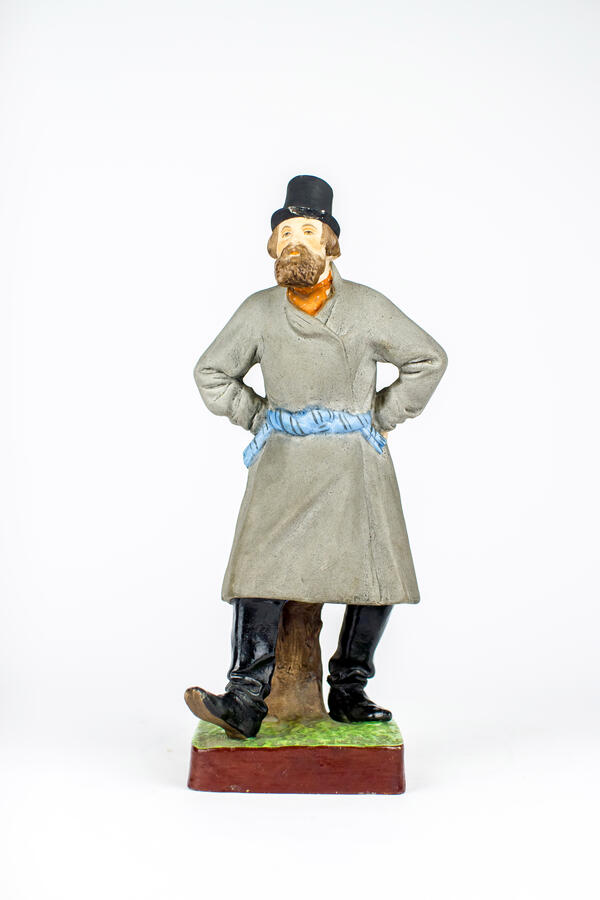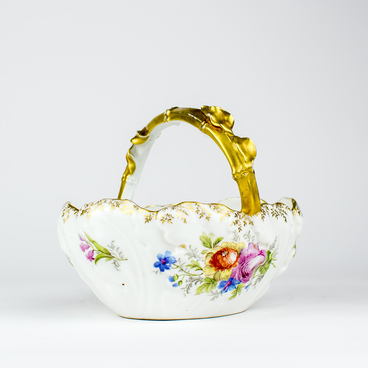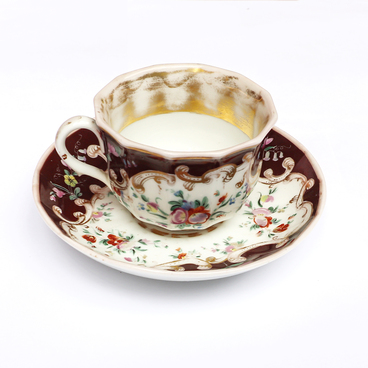The “Dancing Man” figurine was made at the Gardner porcelain factory as part of the “Pictures of People’s Life” series.
The English merchant Franz Gardner founded one of the best porcelain factories in Russia in the second half of the 18th century. The factory was located in the village of Verbilki, Dmitrov district, Moscow province.
The factory produced porcelain and earthenware dishes, as well as sculptures. The factory’s items were regularly displayed at industrial exhibitions, and it was repeatedly awarded gold and silver medals.
Gardner also established mass production of porcelain tableware along with exclusive items intended for imperial palaces and houses of the highest aristocracy. It was highly appreciated in Russia, and many citizens who could not buy expensive imported porcelain, bought Gardner’s products with enthusiasm.
Seventy people worked at the factory in Verbilki in 1771. The number of employees doubled in a decade. At the same time, only the manager and the artist were foreigners among hundred and fifty employees. When Franz Gardner died, his heirs continued the business.
The Gardner factory took first place in Russia by the number and variety of figurines produced in the 1820s. The series “Folk types” or “Pictures of folk Life” was inspired by the popular porcelain figures of representatives of various nationalities and professions, which were produced at the end of the 18th — the beginning of the 19th century by the Imperial Porcelain Factory in St. Petersburg.
Small figurines at the Gardner plant were made according to well-known paintings and illustrations. The figurine presented in the exhibition was made from drawings by M. Piccolo (his name has not been preserved) for the essays of Alexander Golitsynsky “Travelling Peasants in Moscow”.
Similar figures decorated the interiors of dining rooms, living rooms, ladies' boudoirs, and workrooms. They were called “dolls for adults”. The figures, which were produced in the middle of the 19th century according to cheap popular prints, were highly valued by collectors as early as at the beginning of the 20th century. They were distinguished by the originality of images, the expressiveness of plastic techniques and the skill of technical execution, careful elaboration of details.
The English merchant Franz Gardner founded one of the best porcelain factories in Russia in the second half of the 18th century. The factory was located in the village of Verbilki, Dmitrov district, Moscow province.
The factory produced porcelain and earthenware dishes, as well as sculptures. The factory’s items were regularly displayed at industrial exhibitions, and it was repeatedly awarded gold and silver medals.
Gardner also established mass production of porcelain tableware along with exclusive items intended for imperial palaces and houses of the highest aristocracy. It was highly appreciated in Russia, and many citizens who could not buy expensive imported porcelain, bought Gardner’s products with enthusiasm.
Seventy people worked at the factory in Verbilki in 1771. The number of employees doubled in a decade. At the same time, only the manager and the artist were foreigners among hundred and fifty employees. When Franz Gardner died, his heirs continued the business.
The Gardner factory took first place in Russia by the number and variety of figurines produced in the 1820s. The series “Folk types” or “Pictures of folk Life” was inspired by the popular porcelain figures of representatives of various nationalities and professions, which were produced at the end of the 18th — the beginning of the 19th century by the Imperial Porcelain Factory in St. Petersburg.
Small figurines at the Gardner plant were made according to well-known paintings and illustrations. The figurine presented in the exhibition was made from drawings by M. Piccolo (his name has not been preserved) for the essays of Alexander Golitsynsky “Travelling Peasants in Moscow”.
Similar figures decorated the interiors of dining rooms, living rooms, ladies' boudoirs, and workrooms. They were called “dolls for adults”. The figures, which were produced in the middle of the 19th century according to cheap popular prints, were highly valued by collectors as early as at the beginning of the 20th century. They were distinguished by the originality of images, the expressiveness of plastic techniques and the skill of technical execution, careful elaboration of details.



